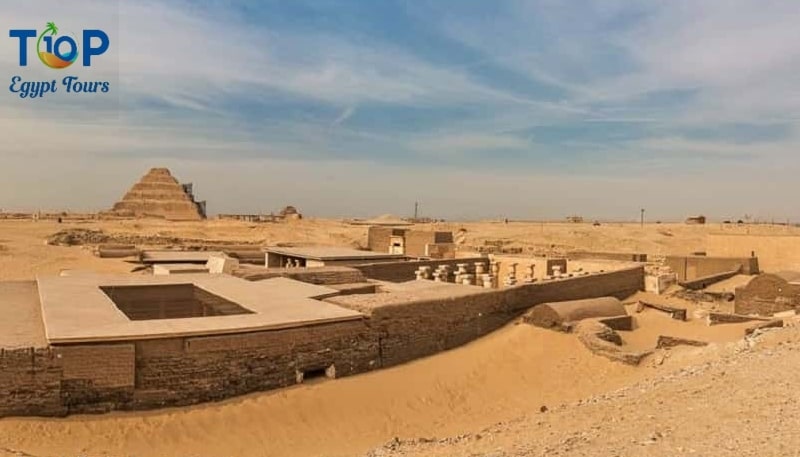Tomb of Horemheb in Saqqara, located in the ancient necropolis of Saqqara in Egypt, is an archaeological site of great historical and cultural significance. It is the final resting place of Horemheb, who reigned as the last pharaoh of the 18th Dynasty during the New Kingdom period of ancient Egypt.
In this article, we will uncover for you the Tomb of Horemheb in Saqqara with Top Ten Egypt.
Historical Background Of the Tomb of Horemheb in Saqqara:
Horemheb’s reign, which lasted from approximately 1319 to 1292 BCE, marked a significant period of transition in ancient Egyptian history. He came to power following the tumultuous reigns of Akhenaten, Tutankhamun, and Ay, and played a crucial role in restoring political stability and religious orthodoxy to the kingdom.
Architecture and Design:
The tomb of Horemheb in Saqqara exemplifies the architectural style and layout commonly found in royal tombs of the New Kingdom period. The tomb complex consists of various chambers and corridors, each serving specific functions related to the pharaoh’s journey into the afterlife.
The tomb’s entrance leads into an antechamber, which is followed by a series of corridors and halls adorned with intricate reliefs and hieroglyphic inscriptions. These decorations depict scenes from Horemheb’s life, religious rituals, and preparations for the afterlife. The burial chamber, located at the heart of the complex, is the final resting place of the pharaoh.
Wall Reliefs and Decorations:
The walls of the Tomb of Horemheb in Saqqara are adorned with finely carved reliefs that provide valuable insights into ancient Egyptian religious beliefs, funerary rituals, and royal iconography. These reliefs depict Horemheb engaged in various activities, such as making offerings to gods, participating in religious ceremonies, and receiving the blessings of deities.
The scenes depicted in the tomb emphasize Horemheb’s close connections with the gods and his role as a mediator between the divine realm and the earthly realm. They also highlight the pharaoh’s desire for a successful transition into the afterlife, where he could continue his existence in the presence of the gods.
Exploration and Significance:
The Memphite Tomb of Horemheb was first discovered in 1908 by the renowned Egyptian archaeologist, Arthur Weigall. Subsequent archaeological excavations and studies have provided valuable insights into the burial practices, religious beliefs, and royal customs of ancient Egypt.
The tomb’s significance lies not only in its historical and cultural value but also in its contributions to our understanding of the 18th Dynasty and the overall development of ancient Egyptian civilization. The reliefs and artifacts discovered within the tomb have shed light on the art, architecture, and daily life of the period.
Visiting the Tomb of Horemheb in Saqqara:
As an important historical site, the Memphite Tomb of Horemheb is open to visitors who wish to explore its wonders. However, access may be restricted at times or require special permissions, so it is advisable to check with local authorities or tour operators for the most up-to-date information.
you can explore the tomb by visiting Saqqara through the Cairo Day Tour, it is essential to respect its historical and cultural significance. Visitors should follow any guidelines or restrictions provided by the authorities and avoid touching or damaging the delicate reliefs and structures of the tomb.
Conclusion:
The tomb of Horemheb in Saqqara stands as a testament to the grandeur and artistic achievements of ancient Egypt. Its reliefs, decorations, and architectural design provide a window into the beliefs, rituals, and aspirations of one of Egypt’s last pharaohs. A visit to this remarkable tomb offers a unique opportunity to immerse oneself in the rich history and cultural heritage of ancient Egypt.



Comment (0)